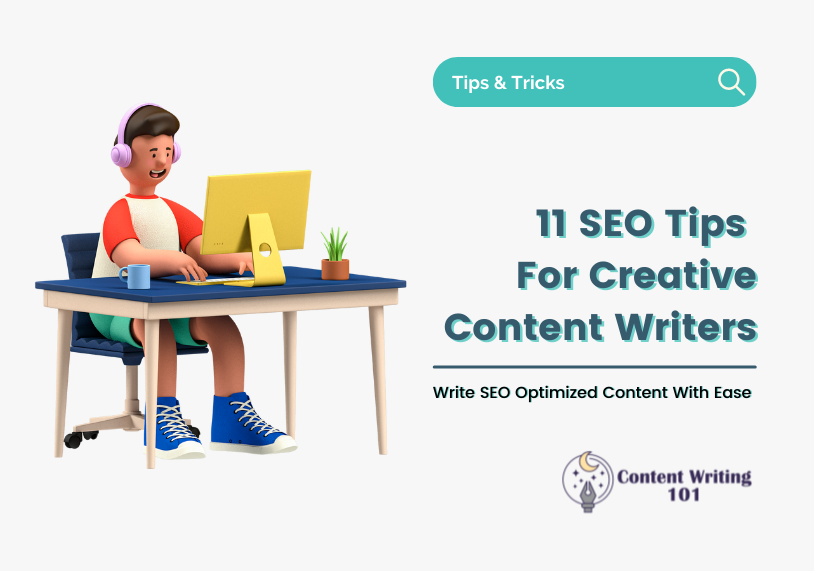SEO offers tremendous validation to writers. That’s it. That’s the statement. I hope you’re tempted to implement SEO in your writings now. So, let’s begin with a qualitative analysis of using SEO in your writings. Now, I think I have taken You for granted. You don’t want to read anything about SEO. SEO wears you down. And worse, SEO takes months or sometimes years to fetch you good results. Plus, there’s no freedom. You have to use keywords and links for authority, and this binds you.
However, if you take a peek into the new age small businesses, almost 80% of them struggle to reap benefits.
Why? Either they publish outdated content, or they don’t have a validated SEO strategy. I’ve got a few unconventional points to make. So if you’re an SEO Pro, I request you to let me know if I miss something important. I’ll add them to the list.
Grab some tea, and let’s jump in
Table of Contents - Quick Look At What's Inside
1. It All Begins With The Keywords!
There’s a good chance you’ve heard about keywords before. Those phrases and words are what people enter into search engines to find content. Using keywords will help you achieve greater visibility for your content.
It is critical to know at least one or two keywords to work with before beginning the writing process. You can use paid SEO tools (If you run a large company or network of websites). There are two data-driven options you can consider: Ahrefs and Semrush.
But it seems you want free ones to start off. Not a problem. You can use free tools, like Ubersuggest or Surfer SEO, to find target keywords. However, keep in mind that a paid tool provides much better data. Paid tools give you a personalized analysis of hits and misses in your SEO implementation strategy as well.
Pro tip: In addition to a relevant keyword, you should choose one with good data and a low level of competition, so your efforts actually yield results.
You can use the Free Content Brief Generator by Contenteum to get a rough outline of what to cover.
With your keywords in hand, you can begin the actual work. Roll those sleeves up.

2. Focus On Better Formatting
Users engage with content more if the text is easy to read. Therefore, Google considers readability when ranking websites. Experts indicated in the latest Search Ranking Factors Survey conducted by Moz that reading level is a ranking factor for keyword-independent pages.
The better the reading level, the better the user experience. The core search algorithm of Google has changed significantly since a couple of years ago, and the user experience now plays a much more significant role.
Here are a few tips for improving your page’s readability:
- Make Your Content As Skimmable As Possible.
- Use Shorter Sentences.
- Embrace Paragraph Breaks.
- Emphasize The Most Interesting Elements Of Your Content (Through The Use Of Subheadings, Bold Type, And Whitespace).
- Active Voice Is The Best Voice.
- To Better Direct Readers, Use Transition Words.

3. Keep Your Personality Intact
SEO is not all about keywords. In fact, don’t focus on keywords while starting out. Write everything that tinkers your brain and worry about keywords later.
I know it’s confusing for you. Just now, I told you to select your keywords, and now I want you to forget them?
But, it’s all a part of a plan, I promise.
The point I want to make here is not to focus solely on your keywords. The first question you should ask yourself is: What is the most important thing? The topic.
Search engines need keywords to generate results, do not misunderstand me. Despite this, quality has a higher value according to Google’s current algorithms. You’ll have to practice for some time before you naturally incorporate SEO keywords into your content.

4. Know Your Readers
This alludes to the previous point of bringing in your personality in your writing. Not until readers know that You are the one writing this article, they won’t bother reading further. After all, everything goes back to your readers. Your audience is the lifeblood of your business.
When you double down on writing for your audience, you become a thought leader, and Google algorithms love thought leaders. As a result, your rankings will improve as well.
So, when you’re writing your SEO content, try to look at things from your reader’s point of view. Now, answer all these questions before you proceed to type it all.
- Who Is Your Target Audience?
- Which Keywords Are They Using?
- Do They Need Any Information?
- How Does That Information Help Them?
5. Headlines: The Real Trouble Makers
Three seconds. Yes, three seconds is what you got to hook your audience. The internet audience is impatient. They don’t read. They skim. The first thing that catches eyeballs is your headline. In other words, these BIG words make a real difference.
The audience is always looking for something snappy if you manage to pull them in, howdy! You got a firm grip on headlines. However, there’s an equal chance that you’ll lose them straight away if those big words didn’t nail the target.
So, never underestimate the power of a catchy headline!
Make sure that your headlines are clear, engaging, and contain keywords. As well as having a strong headline, your meta description should also express your article’s topic well. Remember that the title and meta description appear in the search results, so use them wisely!

6. Optimise Your Internal And External Link Building
Gone are the days when you used to buy those links and get scores of traffic on your website. Link building has come a long way since then. There are two ways you can practice link building in your content:
1. Internal linking:
This is where you link back to your previous articles or pages on your website. This way, you keep the reader bouncing within your website. Not only it generates engagement and traffic, but it also improves your site’s overall ranking on search engines.

2. External linking:
Here you link your content to authority websites and sources to back your claims. External linking provides substance to your article and hence, improves the trustworthiness of your website.
If you’re into infographics or video content, you may add an embed code in your article. Embed codes enable viewers to easily add your content to their blogs, making it easy for people to share. In addition, it makes it easy for you to generate some inbound links since the embedded image will automatically link back to your website.
Overall linking increases the shareability of your content. It also helps you make an impact as an expert. So, always aim for quality link building in your content.
7. Use Imagery
People love images. In fact, they tend to retain more visual information rather than text. So, make sure your posts pop with images!
Adding an image along with your blog post can make a big impression. If possible, create a Pinterest account? In addition to promoting your blogs across your other social media channels, posts with images can also be pinned, adding another avenue for traffic to your website.
8. Use Relevant Images In Your SEO Content
A keyword here is relevant. Make sure you don’t just post random photos of “office people smiling” around your posts; that doesn’t appeal to anyone.
It would be best if you instead used graphs, charts, screenshots, quote blocks, CSS boxes, and other engaging elements.
9. Edit Without Mercy
Editing your work is another essential step that many fail to do.
I suggested taking a break after writing and editing your piece. Consider working on another project that’s due soon.
Then what? Edit once again. Maybe even a second-round after that.
There’s nothing worse than missing a comma during writing, so make sure you never forget anything essential.
In case you are unsure that you’ve captured everything, get a second pair of eyes. There’s no harm in trying a professional editor. But even then, you need to be clean from your end.

10. Use Social Media For Promotions
Here are some tips that will help boost your content after it’s been posted. These social media giants – Twitter, Facebook, and Instagram – are all powerful tools brands are using to promote their SEO content.
In addition to being a free and quick way of connecting with your audience, it is also becoming increasingly essential for content marketing.
Create a social media account or two on whatever platform is best for you, and make sure you post at least weekly. If possible, you should post 1-2 times per day, up to a few times weekly.
11. Keep Updating Your Content
Check your top-performing articles every six months and see if there’s anything you can do to improve them.
When most companies reach the #1 ranking for a keyword, they never touch it again until someone outranks them with a better article.
What can you do to prevent this? When possible, analyze and improve your top-performing content each year. You can also look at the number of social interactions (shares, likes, etc.) to get an idea of the virality of your post. By looking at these simple metrics, you can see which content pieces are most well-received and most liked so that you can replicate them in the future.

And that’s about it – thanks for reading!
Now, let’s come back to the introduction. Do you think I missed something?
SEO is a broad topic in content marketing. I covered only the SEO writing part. So, if you feel there’s something left to be added, feel free to post them in the comments.
If I find them super spicy, I’ll add them to this post.
